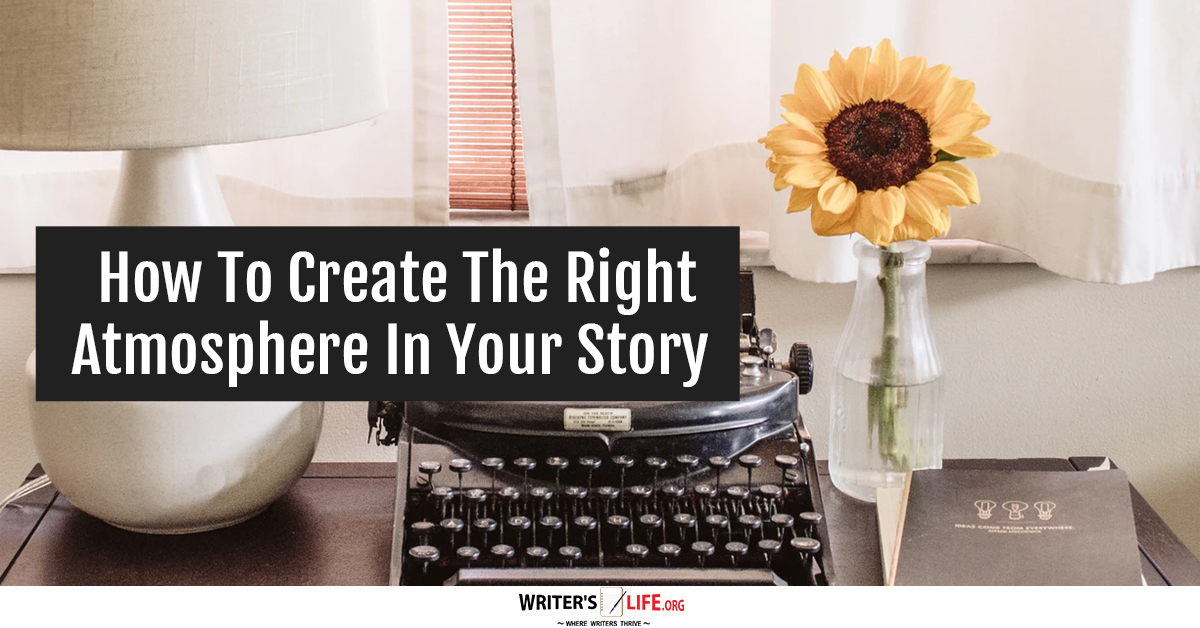- How To Tackle Jealousy In Creative Writing
- Common Submission Mistakes
- How To Stop Your Blog Becoming Boring
- The One Thing Every Successful Writer Has In Common
- How To Make Yourself Aware Of Publishing Scams
- Why Almost ALL Writers Make These Grammar Mistakes At Some Point
- 5 Tips For Authors On How To Deal With Rejection
- Top Mistakes to Avoid When Writing a Novel
- How to Avoid Common New Writer Mistakes
- 10 Mistakes New Fiction Writers Make
How To Create The Right Story Atmosphere In Your Story

Setting the right story atmosphere for each of the different scenes in your story is crucial if you hope to engage your readers in the right way. However, it’s not always that easy. You might wish to evoke a certain mood, but it’s through a combination of several different parts of crafting the story that this will happen most effectively. A writer must pay attention to the setting, the pacing, the language, and the dialogue and use all of these elements to create the right mood.
If you are writing a novel, you are likely to want to create several different moods throughout the story, which will change as the plot unfolds. Even if your book, by definition, is a tense thriller, or even a horror story, without lighter, easier passages, it will be challenging to increase tension and unease effectively. The relentlessness of a single atmosphere throughout with no relief could be hard going for any reader.
So what are the things you can do to create the right story atmosphere and strengthen the atmospheric quality of your stories?
Work on your setting
Your setting is a fantastic place to start when it comes to evoking a particular mood. You can use the weather, the colors, the objects a character observes, how crowded or isolated the place is, the noises, the smells, and so on to create a particular mood. The location could be bleak and lonely, or bright and full of laughter, or crowded and intense, and so on. The setting and the way your character reacts to their surrounds will create a particular mood.
Pay attention to your language
You can include specific words to help build a particular atmosphere. Your word choice can be beneficial; for example, a character ambling creates a different sense of atmosphere to one who is tiptoeing. You could create a list of words that help to give off a particular mood. If you are trying to create a sense that a house is creepy, words such as creaking, thumping, moaning, cackling, whistling, humming, and so on are good choices. Work out the mood that you are hoping to convey and then make a list before you start to write those passages to help you.
Use dialogue and character reaction cleverly
Exchanges between characters and the way they react to what’s being said, as well as the situation they find themselves in is another great way to strengthen the atmosphere in a story. Conversations between characters can be fraught with tension, can be angry, full of hurt, love, laughter, and so on. Use your dialogue carefully to help convey to the reader the atmosphere in any particular scene. The way that characters act and react around one another and in their surrounds can also help to demonstrate a specific mood. In a bustling party, one character may feel energetic and excited; another may feel anxious and claustrophobic, and how you choose to describe their reaction will help build a particular mood and build anticipation for what might happen next.
Check your pacing
Pacing is crucial when it comes to the atmosphere. If a scene is particularly tense or suspenseful, action tends to unfold more quickly, and the use of shorter sentences will support this. Try to consider how complex your sentence construction could be when trying to give a particular sense of something - this can affect your pacing too.
If you are trying to get the mood right in your novel, the above tips can help ensure that you do so successfully. Do you have any suggestions or techniques for setting the right atmosphere in your stories? Share them with us here!
So now you know how to create the right story atmosphere, why not learn about choosing the setting of a story?
Get A Free Writer's Toolkit By Visiting https://www.writerslife.org/gid






























